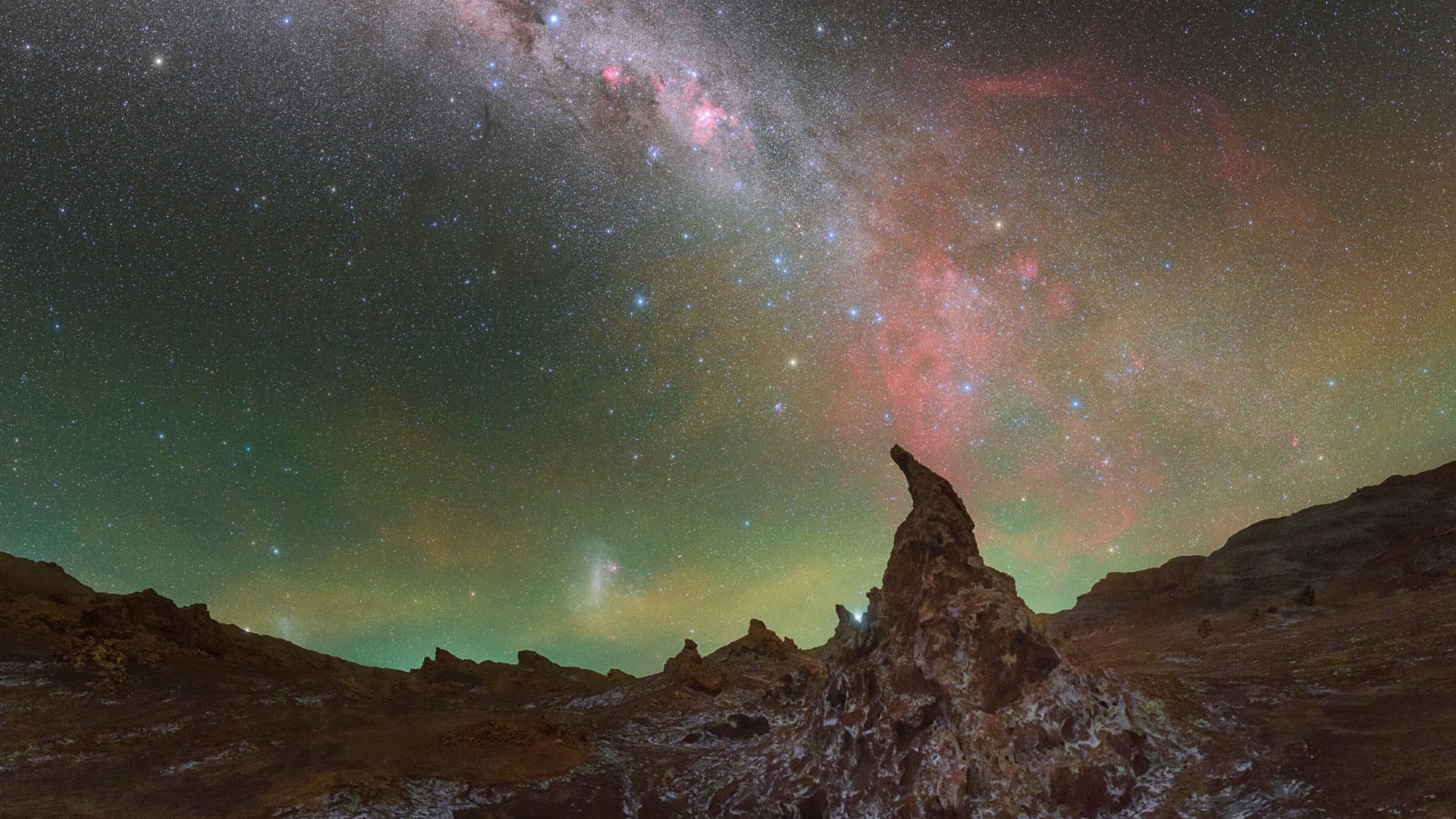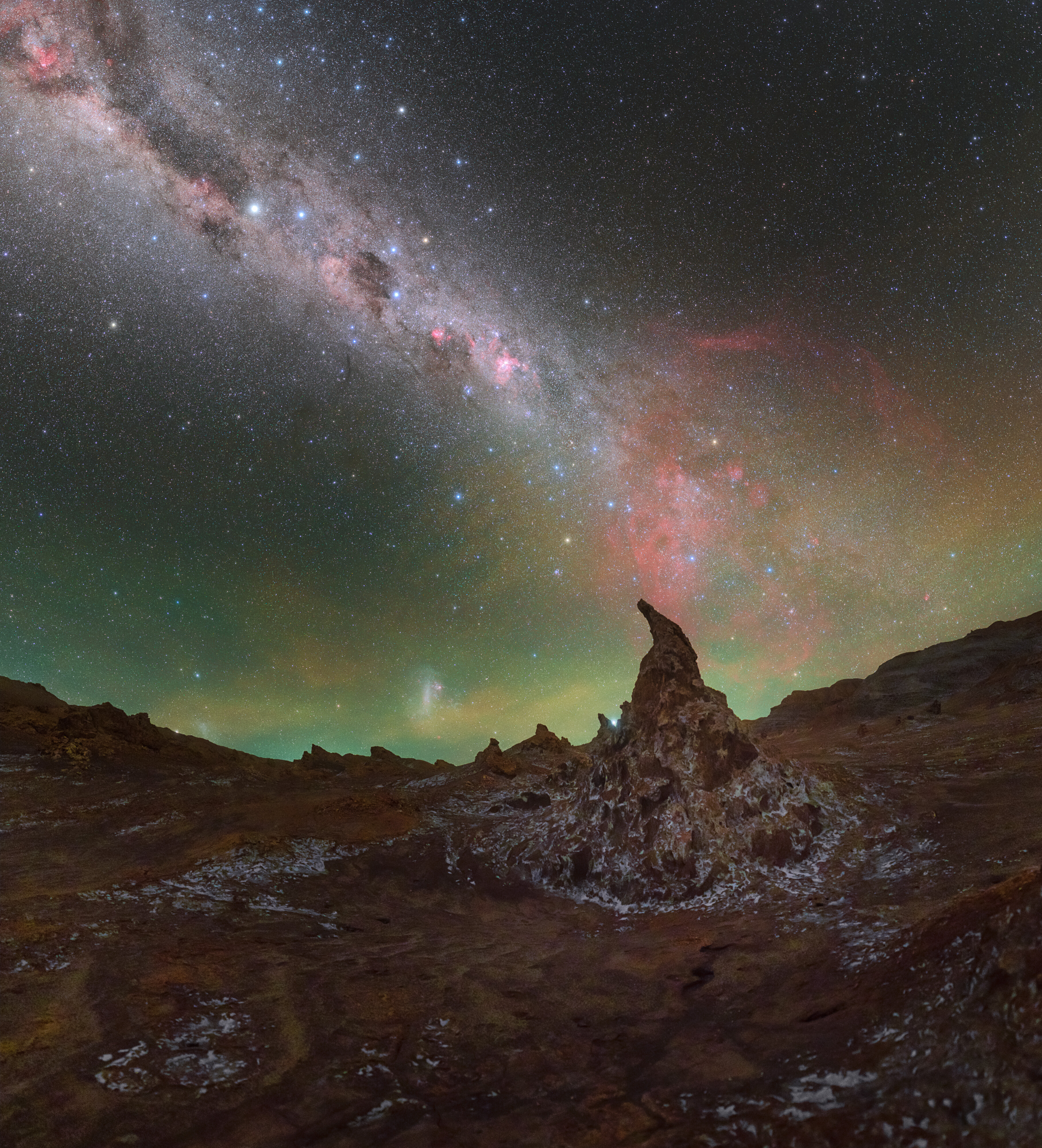
The stars of the Milky Way glisten in the night sky above Chile's Valle de la Luna in a new photo from the European Southern Observatory (ESO).
The photo captures the Milky Way galaxy illuminating the picturesque Valle de la Luna, meaning "Valley of the Moon," which is located in the Chilean Atacama Desert. Known for its moon-like landscapes and rock formations, Valle de la Luna offers a mystical scene in an otherwise desolate area.
"The strange geological formations protruding out of the desert floor are twisted and gnarled like old wizards' hats, while the sky above is filled with thousands of stars and a myriad of mesmerizing colors," ESO officials said in a statement accompanying the photo on Nov. 27.
Related: The Milky Way sparkles like fireworks in this desert view of our galaxy (photo)

Valle de la Luna is located near ESO's Atacama Large Millimeter/submillimeter Array (ALMA) — a network of 66 radio telescopes that study light from some of the coldest objects in the universe. The area is a great place for stargazing, given the high altitude, dry air and distance from civilization and its inherent light pollution. The area's climate aids in ALMA's observations, as water vapor in Earth's atmosphere can absorb the invisible light collected by the radio telescope, according to the statement.
"It's easy to see where the valley gets its name from; the moon-like formations on the dried-up salt beds have been eroded by eons of exposure to the elements and feel far more out of this world than of it," ESO officials said.
Valle de la Luna features tall rock formations, also called spires, and canyons. In the new ESO photo, the Milky Way arcs beautifully over a prominent rock spire, which appears to be pointing viewers to the night sky. Bright blue stars are surrounded by pink clouds of gas and dust woven through the Milky Way.
"As the night unfolds, the sky comes alive with the glowing cascade of the Milky Way, illuminated by gas and stars," ESO officials said. "The vibrant red color dancing across the Milky Way comes from hydrogen atoms distributed throughout our galaxy."







